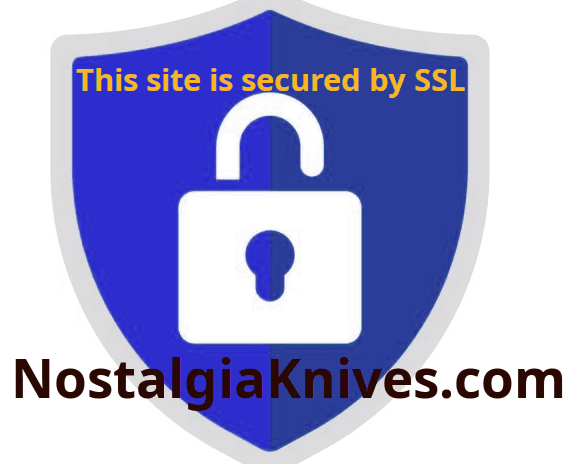Colonial Cutlery: Knives in Early American History.
Posted on November 19, 2023 by congo
Colonial Cutlery: Knives in Early American History.
Introduction:
In the formative years of what would become the United States, knives were indispensable tools that played a vital role in the daily lives of early colonists. As settlers ventured into the unexplored wilderness, the reliability and versatility of their knives became essential for survival, sustenance, and the shaping of a new society. This article explores the fascinating history of colonial cutlery, tracing the evolution of knives in early American history and their significance in the daily lives of the colonists.
Pioneering Tools for Survival:
Colonial America was a frontier where survival often depended on one’s ability to adapt and thrive in a challenging environment. Knives, serving as multi-purpose tools, became indispensable for various tasks. From clearing land and building shelters to hunting, butchering, and preparing food, knives were the constant companions of early colonists.
Forging Blades in the New World:
In the early colonial period, the production of knives and other metal tools was limited by the available technology and resources. Colonists brought traditional European forging techniques with them, adapting these methods to the conditions of the New World. Blacksmiths played a crucial role in crafting knives, producing blades that were sturdy, durable, and well-suited to the demands of colonial life.
Types of Colonial Knives:
- Bowie Knives: The Bowie knife, with its distinctive clip point and double-edged blade, gained popularity in the American South during the early 19th century. While not prevalent in the earliest colonial period, it reflects the evolving styles and preferences in American cutlery.
- Hunting Knives: Given the importance of hunting for sustenance, knives designed for skinning and butchering game were common among colonial settlers. These knives often had robust blades and sturdy handles to withstand the rigors of field dressing.
- Trade Knives: As interactions with Native American tribes and trade networks increased, trade knives became popular. These knives, with simple designs and often featuring a trade mark on the blade, were exchanged in the fur trade and other commercial transactions.
- Pocket Knives: The practicality of pocket knives made them valuable tools for everyday tasks. These knives had folding blades, making them convenient to carry, and were used for various cutting and utility purposes.
Role in Daily Life:
In the absence of modern conveniences, knives were integral to daily life in colonial America. They were used for crafting tools, building structures, preparing food, and even as weapons for self-defense. The versatility of knives made them essential possessions for both rural settlers and those in burgeoning colonial towns.
Colonial Knife-Making Centers:
As colonial settlements grew, specialized knife-making centers emerged. Cities like Sheffield in Massachusetts became known for their skilled blacksmiths and cutlers who produced high-quality knives. The craftsmanship of these centers contributed to the development of distinct regional styles in American cutlery.
Symbol of Self-Reliance:
The possession of a reliable knife became a symbol of self-reliance and resourcefulness for colonial Americans. It was a tool that transcended social classes, carried by farmers, traders, frontiersmen, and urban dwellers alike. The ability to maintain and use a sharp knife was a practical skill that signified competence in a demanding environment.
Legacy and Evolution:
The knives of colonial America laid the foundation for the cutlery traditions that would evolve over the centuries. As the nation expanded and technologies advanced, the role of knives evolved from essential tools for survival to everyday items used in diverse settings. The legacy of colonial cutlery endures in the designs, craftsmanship, and cultural significance of American knives.
Conclusion:
Colonial cutlery tells a compelling story of resilience, adaptation, and the importance of tools in shaping the early history of America. Knives, once crucial for survival on the frontier, have evolved into symbols of American craftsmanship and self-reliance. The legacy of colonial cutlery lives on in the diverse array of knives that continue to be crafted and used in the United States, connecting modern enthusiasts to the pioneering spirit of those early settlers who relied on their knives to carve out a new way of life in the New World.
Category: Blade Talk, History & Legacy
Free Shipping on orders over $79.00
- - USA only
- - USPS Flat Rate
- - Not valid with other promotions
Make An Offer!
- - Button only visible to logged in users.
- - Unreasonable offers will be dismissed.
- - Submitting an offer is not a commitment to purchase.
- - Some items excluded from Make Offer feature.
Category Menu
- Under $109696 products
- Camp/Scout Knives3737 products
- Chef Knives33 products
- Collectible Knives335335 products
- True Nostalgia2323 products
- Damascus Knives3434 products
- Everyday Carry[EDC]427427 products
- Fixed-Blade5454 products
- Folding-Blade440440 products
- Straight-Razor11 product
- Pocket Knives397397 products
- Hunting Knives7878 products
- Money Clip Knives22 products
- Multi-Tool Knives4848 products
- Novelty Knives3737 products
- The Barrel33 products
- By Manufacturer388388 products
- Amica11 product
- Anvil Brand44 products
- AutoPoint22 products
- Bear MGC11 product
- Bear & Son Cutlery11 product
- Böker1212 products
- Böker Solingen66 products
- Boker USA33 products
- Boker Plus22 products
- Browning Knives22 products
- Buck knives22 products
- Buck Creek11 product
- CamCo33 products
- Camillus Cutlery2727 products
- Case XX™2626 products
- Cattaraugus Cutlery Co.33 products
- Cherokee11 product
- Clauss Cutlery11 product
- Colonial Knives1818 products
- Coyote Prov. USA11 product
- Ranger11 product
- Columbia River11 product
- Comanche11 product
- Craftsman55 products
- Crowing Rooster11 product
- Cuda11 product
- Custom/Handmade3232 products
- CutCo11 product
- E.C. Simmons Cutlery Co.11 product
- Elk Ridge11 product
- ESEE11 product
- F.A. Bower Imp. Co.11 product
- Federal Knife Co.33 products
- Johnston USA11 product
- Frost Cutlery1515 products
- White Tail11 product
- Steel Warrior55 products
- Frost Family11 product
- G.C. & CO Mora, Sweden11 product
- Gerber44 products
- Gerson Co. Boston11 product
- Hammer Brand66 products
- Hen & Rooster™1010 products
- HIT USA11 product
- Imperial3333 products
- iPak11 product
- IXL George Wostenholm11 product
- J.B Rand & Co.11 product
- John Primble11 product
- Johnson Western Works11 product
- Ka-Bar22 products
- Keen Kutter11 product
- Kent22 products
- Kentucky Cutlery44 products
- Eagle Edge44 products
- Kissing Crane11 product
- Klein Tools Inc.44 products
- Lark33 products
- Latama11 product
- New York Knife Co.22 products
- Old Forge Knives11 product
- Other Knives22 products
- Owl Head22 products
- PAL Cutlery Co.11 product
- Parker Cutlery Co.11 product
- PIC11 product
- Providence Cutlery66 products
- Puma33 products
- Queen Cutlery Co.11 product
- Remington22 products
- Ridge Runner11 product
- RILL Simple Tools11 product
- Rite Edge11 product
- Robeson Cutlery33 products
- Rough Rider33 products
- Royal Brand Cutlery11 product
- Sabre22 products
- Schrade3232 products
- Old Timer1717 products
- Uncle Henry66 products
- Sears55 products
- Seki22 products
- Sharp33 products
- Sheffield Knives55 products
- Simonds11 product
- SOG22 products
- Solingen Knives11 product
- Syracuse USA11 product
- Clover Brand11 product
- The Ideal1919 products
- Thornton USA11 product
- Ulster77 products
- Unknown/Misc.4343 products
- Utica Cutlery Company99 products
- Kutmaster99 products
- Valley Forge - Newark, NJ11 product
- Victorinox1010 products
- Wenger33 products
- Western22 products
- Winchester11 product
- Zippo55 products
EXCELLENT rating
Based on 1 reviews

By using this site you're accepting
our Online Sales Disclaimer
*Must Be 18 years or older to purchase*
Buyers Are Responsible For Knowledge Of And Adherence To Their Country, State and Local Knife Laws.
CA PROP 65 ⚠WARNING: Cancer and Reproductive Harm - www.P65Warnings.ca.gov
Copyright © 2025 · All Rights Reserved · NostalgiaKnives.com
Theme: Natural Lite by Organic Themes
